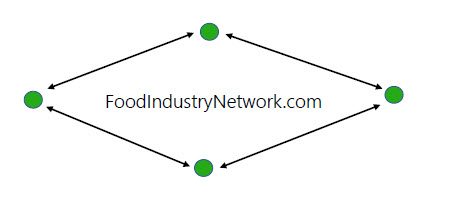Lactanet embarks on LPI modernization process

A long-standing tool for predicting the milk production performance of dairy cattle daughters will be “modernized” to make it more user-friendly and reflective of contemporary knowledge about feed efficiency.
Read Also

Are your kids safe on the farm?
There’s good and bad news on Canada’s farm injury front. Deaths on farms or related to farming practices dropped an…
During Lactanet’s recent open industry session, Chief Services Office Brian Van Doormaal gave a presentation entitled “Modernizing LPI (Lifetime Performance Index)” and later said he had enough positive feedback to begin a process that could take up to two years.
Why it matters: Many dairy producers use LPI as part of a strategy for breeding high-quality cows.
Van Doormaal was among the leadership of the Canadian Dairy Network (one of Lactanet’s predecessor organizations) when it introduced LPI in 1991. He said it initially combined the effects of genetic traits in three categories: milk production; durability; and health/fertility.
The goal was to allow breeders to predict production performance of future daughters throughout their lifetime.
In 2001, the Canadian Dairy Network introduced additional longevity, durability, fertility and health traits. Even more recently, Lactanet launched its feed efficiency predictive tool and added its effects into LPI.
Now it has a methane efficiency tool that could also be tied to lifetime production parameters.
Potential introduction of methane efficiency into the index was one reason Lactanet’s Genetic Evaluation Board (GEB) began contemplating an LPI modernization, Van Doormaal said.
“The GEB did not want to … add another number on the end of it to bring in methane efficiency, as had been done with feed efficiency.”
It’s also possible the GEB could request incorporation of more traits related to disease resistance and health, and these could be added at the same time as other changes.
“When we started LPI, this formula (was) very simple to use and simple to interpret,” Van Doormaal noted. Now, “we’re getting a more diverse LPI formula with multiple groups of traits involved in it.”
The provision of LPI predictions requires 40 data points on production and 20 on type traits, with possibly more to come.
The formula for the current LPI is available on the Lactanet website, added Van Doormaal, but “there’s no way that anybody knows or memorizes those numbers, including myself.”
Besides making it less complicated, a secondary goal is to eliminate the mathematical nature of the formula.
Van Doormaal admits that came from his own direction more than 30 years ago, but he recognizes it is not the most preferred form of communication about genetic information. He noted that, under the current system, the final rating for an animal has no definitive meaning. If one cow is rated 100 points higher than another, there’s no quantifiable way to confirm it.
“This is despite the numerical formula.”
This sets the LPI apart from Lactanet’s separate Pro$ genetic index, which targets a cow’s lifetime “profitability.” If an animal scores five points higher than a herdmate on the Pro$ scale, said Van Doormaal, it will — theoretically at least — earn $5 more in its lifetime than its herdmate.
He said the LPI has never been strictly about profitability. It’s about cow performance and doesn’t reflect costs related to barn management or feed.
“We’re not guaranteeing that … the way the (traits in the formula) combine into the LPI reflect the optimum economics,” he said. “Often, it would be used as a starting point but not as a finishing point” for maximizing profit.
Part of the mathematics involve attributing a relative weight to each trait as it affects LPI. But Lactanet geneticists believe they can accomplish this in a non-mathematical way by establishing several subgroups of traits that affect a particular factor.
These factors, tentatively, are production, longevity, health and welfare, reproduction, milkability and sustainability.
The production sub-index would take in milk yield and conformation traits, health and welfare would take in disease resistance traits, reproduction would include daughter fertility and daughter calving ability, and milkability would take in milking speed, temperament, udder depth and teat placement.
Some of these sub-indexes could include traits that aren’t in the current LPI formula but are strongly co-related to other traits in the formula. It’s possible these would be listed as correlating traits in an updated LPI approach.
It’s proposed that each animal would be given a percentile rank among the breed for each sub-index.
Some breeds will not have all the sub-indices. Given that feed efficiency and methane efficiency genetic indices have only been completed for the Holstein breed so far, it’s likely the sustainability sub-index will be absent for other breeds from an updated LPI system.
If the GEB makes recommendations to Lactanet’s board of directors in December about modernizing the LPI, Van Doormaal expects it wouldn’t be implemented until 2025 or later.
Source: Farmtario.com

